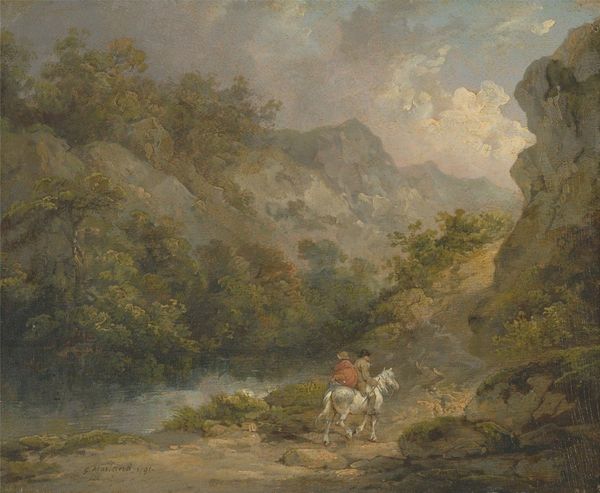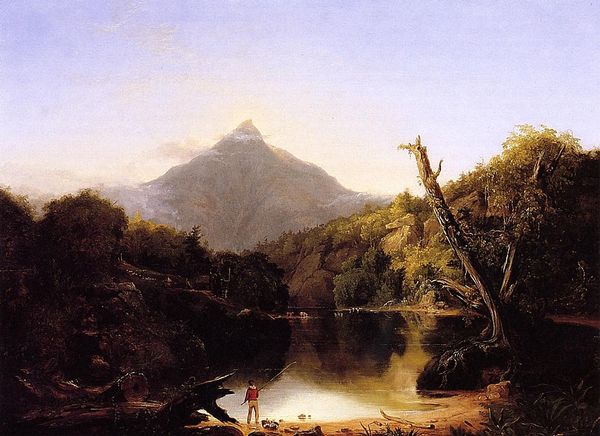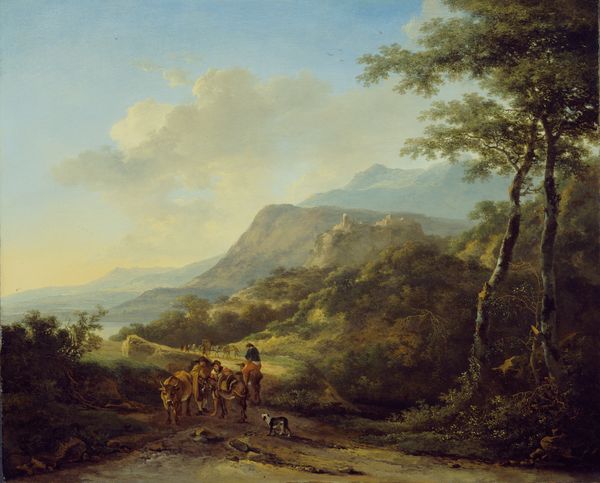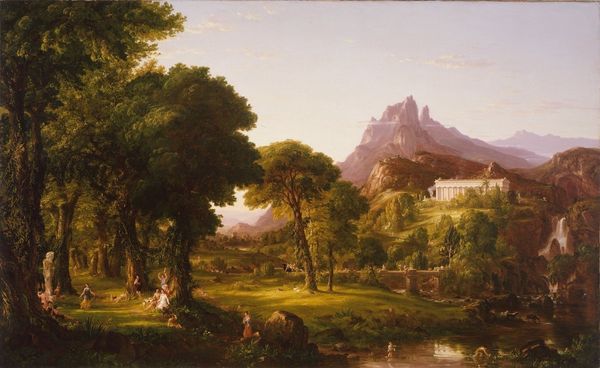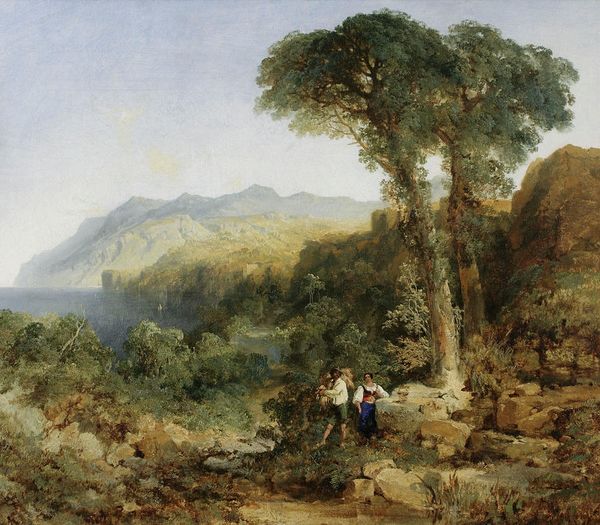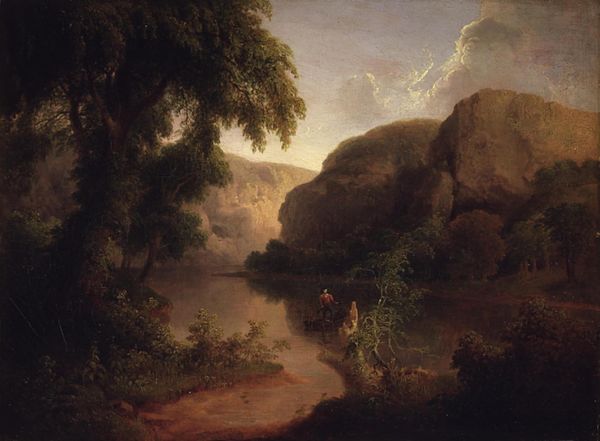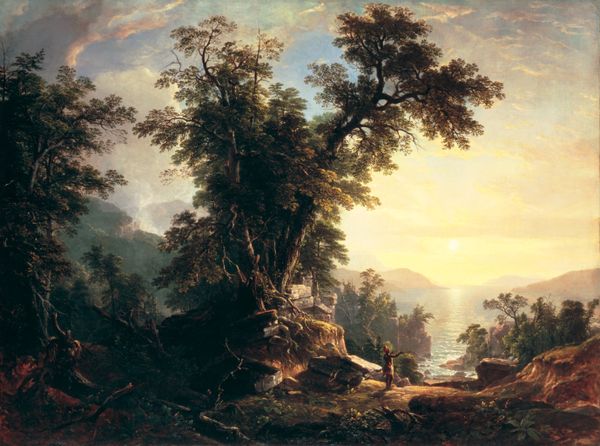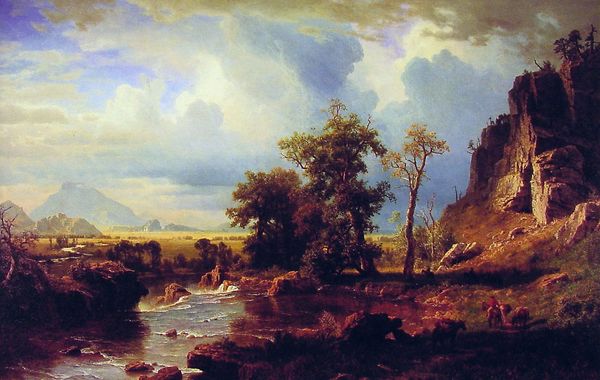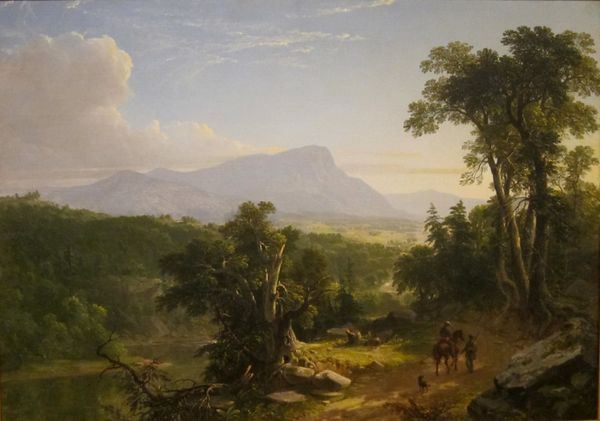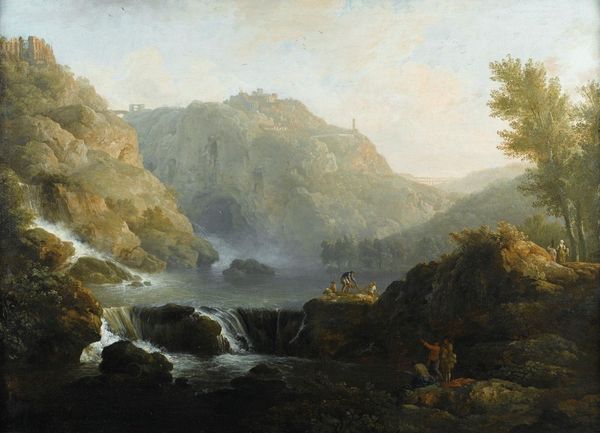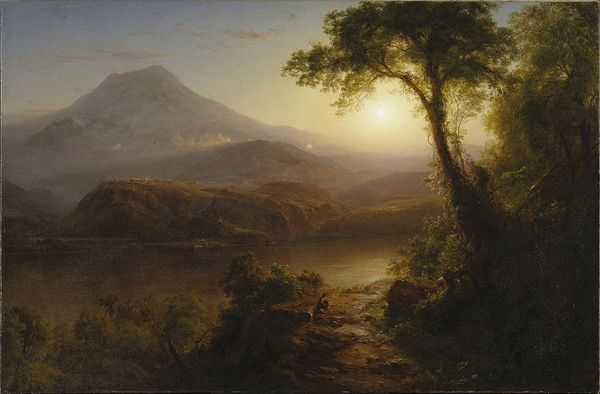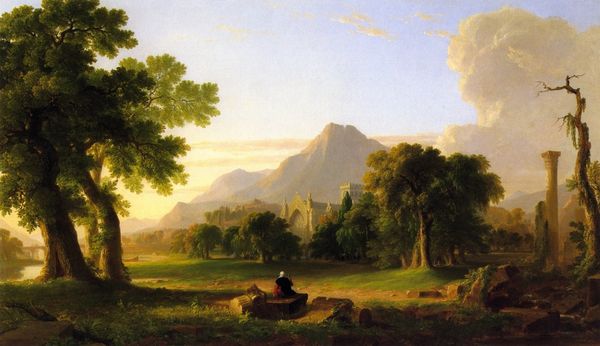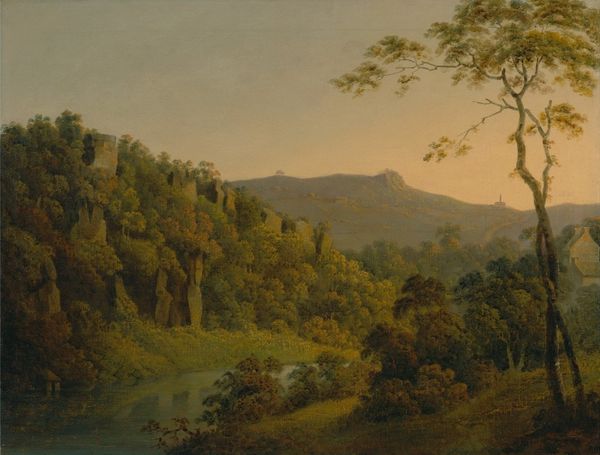
painting, oil-paint
#
painting
#
oil-paint
#
landscape
#
oil painting
#
romanticism
#
hudson-river-school
#
realism
Copyright: Public Domain: Artvee
Editor: Thomas Cole's "The Mountain Ford," painted in 1846 using oil paints, really captures a serene, almost wistful mood. That lone rider feels dwarfed by the grandeur of the landscape. What do you see in this piece? Curator: Immediately, I'm drawn to the juxtaposition of elements. Notice the lone figure—a symbol of humanity's interaction with nature. The ford itself represents a crossing, a transition. But crossing into what? Consider how frequently the symbolism of mountain ranges recurs, their jagged edges connoting something untamed and monumental. What feelings are evoked as your eye follows the painting’s journey from foreground to background? Editor: I guess I hadn't considered the idea of 'crossing over.' I was more struck by the sense of scale and maybe the insignificance of the human figure. Curator: Exactly. That sense of insignificance is crucial. It’s tied to the Romantic era’s fascination with the sublime—the overwhelming power of nature. The details invite meditation: The deliberate positioning of the figure. Does it speak of mastery, humility, reverence, or vulnerability? Perhaps, it symbolizes the transient nature of human life compared to the timeless mountains. It feels laden with such psychological symbolism, don't you think? Editor: It's amazing how much I missed on my first impression! I see how symbols like mountains and even something as simple as a river crossing can carry deeper meanings. Curator: And that’s the beauty of engaging with art. Every viewing peels back another layer of interpretation, enriching our understanding not just of the artwork, but of ourselves and the culture that created it. Editor: Thanks, this has given me a lot to think about! I definitely view the painting very differently now.
Comments
No comments
Be the first to comment and join the conversation on the ultimate creative platform.

